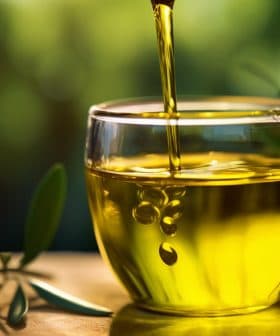Rapid Test Developed to Check the Quality and Authenticity of Olive Oil
Researchers from the University of Bayreuth in Germany have developed a rapid test using NMR spectroscopy to identify the quality and authenticity of olive oil samples, providing results within one hour. This method allows for the identification of substandard or incorrectly labeled olive oil samples, verifying health claims and detecting adulteration with other oils.
Researchers from the University of Bayreuth in Germany have developed a new rapid test using nuclear magnetic resonance (NMR) spectroscopy to identify the quality and authenticity of olive oil samples.
According to Stephan Schwarzinger, who heads a food authenticity and quality working group at the university, this method provides results within one hour and can be used to identify olive oil samples that are substandard or incorrectly labeled.
The olive oil experts were impressed by how quickly and thoroughly the quality and authenticity of olive oils can be determined.
“Over several years, we collected and analyzed more than 1,000 different samples of extra virgin olive oil,” Schwarzinger said. “The NMR measurement provided us with an individual profile for each sample with all properties relevant to quality and authenticity.”
Using the NMR spectroscopy, researchers can identify the type and concentration of the main compounds of olive oil, including the different fatty acids and polyphenols.
See Also:Researchers Identify Main Types of Olive Oil Fraud, Propose SolutionsTherefore, the researchers were able to verify whether the health claims printed on the olive oil labels correspond with European Union regulation.
They can also use the method to determine whether extra virgin olive oils have been adulterated with non-virgin oils or other types of vegetable oils, a problem with which consumers and producers have been dealing for millennia.
(Cuneiform tablets dating from about 5,000 years ago describe “an olive oil surveillance team” charged with investigating fraud in what is now modern-day Syria.)
“Cheap alternative vegetable oils are dyed green and sold as olive oil, rancid oil is mixed with a good oil or old oils are glossed over with special technologies and come back into circulation as extra virgin olive oil,” Schwarzinger said.
Along with identifying the compounds present in each olive oil, the researchers said that this method can also be used to identify the provenance of the olive oil. This is done by comparing the sample with an existing olive oil profile to determine the credibility of the declaration of origin.
Schwarzinger believes that NMR spectroscopy can be the tool of choice for authorities charged with identifying counterfeit products and stopping food fraud.
“Our new test option met with broad interest. The olive oil experts were impressed by how quickly and thoroughly the quality and authenticity of olive oils can be determined,” he said. “This can significantly improve the transparency of olive oil supply chains and markets.”









